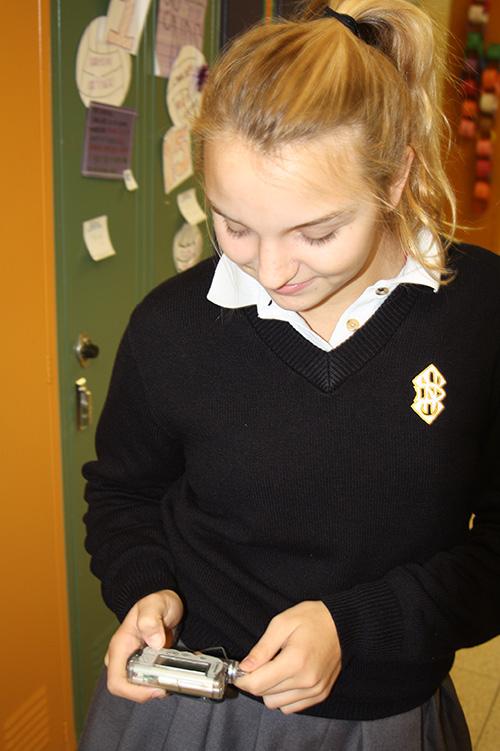When people think about November, some things that come to mind are changing leaves, colder weather, getting together with family for Thanksgiving and Christmas lurking around the corner. For most people, American Diabetes Month is not on that list. But for freshman Camille Keane and her sister, senior Grace Keane, diabetes is a normal part of life. Camille was diagnosed with Type 1 diabetes on Dec. 10, 2010.
“She started to lose some weight, so we took her to the doctor,” Grace said. “We found out that she had diabetes when they checked her blood sugar at the doctor’s office.”
Camille and Grace’s father also has diabetes. Grace said that Camille’s diabetes might be genetic, but that they do not know for sure. Because of this family history, and some outside knowledge, both girls said they were familiar with the disease before Camille’s diagnosis.
“We knew a good amount about it, but we weren’t extremely aware,” Grace said. “We had heard about it from family friends and some of it was just common knowledge.”
According to the American Diabetes Association, nearly 26 million children and adults in the United States have diabetes. Of these, 1 in about 400 children and adolescents have the disease. These numbers show that diabetes affects a lot of people around the country, changing their lives drastically.
Camille said that her life has indeed changed since being diagnosed with diabetes.
“I have to be more responsible and aware of what I eat and when I eat,” Camille said. “I also have to constantly know what my blood sugar is.”
The people who actually have diabetes are not the only ones affected by the disease. Diabetes also affects the family members of those with the disease.
“We all just have to be more aware and careful, like when we go out to eat,” Grace said. “We also need to know what to do in certain situations, in case something happens.”
Diabetes is caused either by the pancreas not being able to produce insulin or by cells not responding to insulin normally. This causes high blood sugar, which can have serious consequences, including weight loss, hunger, excess thirst and fatigue.
Diabetes can be treated, although there is no cure at this time. People with diabetes need to be constantly monitoring their blood sugar levels. If their blood sugar is too low or too high, they have to adjust it, through insulin injections, medicine, diet or exercise.
Camille uses an insulin pump as treatment for diabetes.
“I type in the amount of carbs for whatever I’m eating and it gives me how much insulin I need,” Camille said, “I’m able to control it and it constantly is making sure my blood sugar isn’t too high or too low.”
Having to constantly monitor diet and exercise can prevent people from eating certain foods or participating in certain activities. Camille plays basketball, and diabetes could easily limit her ability to participate in active sports. Despite these possible limitations, Camille said that her diabetes has never outright prevented her from doing anything.
According to the American Diabetes Association, American Diabetes Month is for raising money to fund research for the prevention, management, and possible cures of diabetes. The Association also raises awareness and educates people about diabetes.
Grace said that she and her family help raise diabetes awareness both by occasionally participating in Juvenile Diabetes Research Foundation fundraisers and simply talking about the disease when the subject comes up in conversation.
For most people, November is a time to give thanks, eat turkey and spend time with family. But some people, like the Keanes, also take November as an opportunity to remember American Diabetes Month and all of the people the disease affects.



